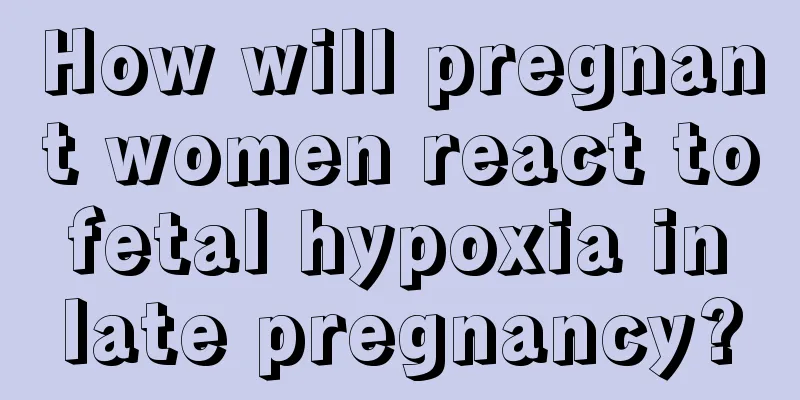The follicles never grow

|
For most women, they hope that they can get pregnant successfully and give birth to one or more healthy and lovely babies. The health of a woman's ovaries is related to whether she can have children. In addition, the development of the follicles is also one of the factors that determine whether a woman can get pregnant successfully. In our lives, there are many women whose follicles do not grow. This is a common situation. So why do the follicles not grow? Let’s take a look at it next. 1. Reasons why follicles do not grow
1. Central nervous system diseases The ovaries can ovulate normally, which is subject to normal feedback and regulation of the hypothalamus-pituitary-ovarian reproductive axis. The hypothalamus is the "headquarters" in charge of the reproductive axis. If there is a problem with the headquarters, such as encephalitis, head trauma, and Kallmann syndrome, it may cause menstrual disorders, anovulation, amenorrhea and other symptoms in women. 2. Pituitary diseases Pituitary lesions may cause amenorrhea and abnormal ovarian ovulation in women. 3. Ovarian anovulation Polycystic ovary syndrome (PCOS), simple gonadal dysgenesis syndrome, hypogonadism, premature ovarian failure (POF), luteinized unruptured follicle syndrome (LUF). 4. Polycystic ovary syndrome Polycystic ovary is one of the causes of follicular dysplasia. Polycystic ovary syndrome is a common cause of female anovulation. The characteristics of its ovaries are that the ovaries are enlarged and have multiple small follicles, but they cannot mature. Therefore, drugs are needed to promote follicle development. 5. Premature ovarian failure In some women, follicular hypoplasia is caused by premature ovarian failure. The patient has normal menstruation in the early stages and even has a history of childbearing, but then the menstruation becomes infrequent until complete amenorrhea occurs. Moreover, the follicles in the ovaries of these patients have been exhausted, and it is impossible to use ovulation-stimulating drugs to develop follicles, or even if there are primordial follicles, they do not respond to gonadotropins.
2. Normal range of follicle size The size of the follicle when ovulation occurs depends on the individual. Some ovulate when the follicle grows to 15mm, while others need it to grow to 25mm. Follicular development is a continuous process, and the normal follicle diameter should be between 18-25mm. The growth from primary follicle to mature follicle can be divided into 8 levels. It takes a total of 10 days from the 6th level follicle to the 8th level follicle, which is exactly the follicular phase in a menstrual cycle. Starting from 16mm, after another 2-3 days, it will develop into a 20mm follicle and then be discharged. 3. Best treatment time ① Treatment should be carried out 3 to 8 days after the menstruation ends; ②Ovarian function is restored 3 to 6 months after treatment; ③The peak of pregnancy is 6 to 9 months after treatment; ④The natural pregnancy rate is as high as 90%. It is recommended that once follicular hypoplasia is discovered, go to a regular hospital for treatment to avoid delaying treatment. |
<<: Why didn't I get pregnant after the follicles were released?
>>: What medicine should I take if the abortion is incomplete?
Recommend
What to do if your eyes are red and swollen during breastfeeding
If swelling occurs in both eyes, the cause of the...
Treatment of postpartum uterine prolapse
Many female friends will experience uterine prola...
Causes of abdominal cramps in pregnant women
The family is very concerned about every tiny cha...
The fastest sign of pregnancy in one week
For women who are preparing for pregnancy, they a...
What causes back pain during menstruation?
Being a woman is not easy. You have to go through...
There are many pitfalls on the road to treating hair loss. Why is it so difficult to grow hair?
Author: Zhang Jianzhong, Chief Physician, Peking ...
Can the folds of the vaginal wall contain bacteria?
Vaginal wall folds are a normal structure of fema...
Is ultrasound during ovulation accurate?
We all know that healthy women have a fixed physi...
Will you feel sore all over during early pregnancy?
Many women experience abnormalities in the secret...
What brand is the Little Whale Mask? How to distinguish between whitening and hydrating in whale masks?
The Little Whale Mask is a Korean clinic product,...
What should I do if my genitals itch after childbirth?
Postpartum mothers will have a lot of vaginal sec...
Why is it so hard to quit sweet drinks? | Science Time
Nowadays, many people are obsessed with sweet dri...
How to regulate high levels of male hormones in women
Nowadays, many female friends have high levels of...
My period is 10 days late.
Delayed menstruation does not necessarily mean th...
Treatment and care of children's colds
1. What is a cold? Children often catch colds at ...









